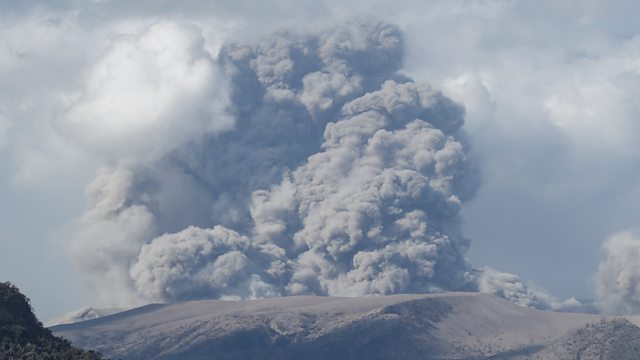Mount Taal volcano
Why Mount Taal volcano near Manila produces so much ash and lightning
An experimental satellite called Aeolus, named after a Greek god of wind, which takes daily global measurements of the wind patterns throughout the depth of atmosphere has improved weather forecasts. ESA’s Anne-Greta Straume explains how it works.
The dramatic eruption of the island volcano Taal in the Philippines was a spectacular picture of the plume of ejecta punching a hole in overlying cloud cover. Nearby towns have been blanketed with dust, fissures have appeared in the ground and there has been dramatic lightning. Geologist Yannick Withoos at Leicester University is studying historic eruptions of Taal and current events have brought the purpose of her research into sharp relief.
Philipp Heck of the Field Museum in Chicago explains how he has found the oldest dust grains on earth inside a Murchison meteorite. They are millions of years older than the solar system.
And Roland Pease talks to Brian Rauch of Washington University, St ouis, who is currently in Antarctica flying detectors on balloons around the South Pole searcLhing for cosmic rays produced in the death of stars.
Tracking climate change in the Himalaya – not up at the snow capped peaks, clearly visible from afar, but in the extensive rocky hinterland further down you occasionally see in documentaries about attempts on Everest – is difficult. Ecologist and hydrologist Karen Anderson, of Exeter University, has used satellite data to measure the changes in the vegetation in this remote area.
(Image: Taal Volcano, Philippines. Credit: EPA)
Presenter: Roland Pease
Producer: Julian Siddle
Last on
More episodes
Previous
Next
Broadcasts
- Thu 16 Jan 2020 20:32GMT����ý World Service Australasia, Online, Americas and the Caribbean, UK DAB/Freeview & Europe and the Middle East only
- Thu 16 Jan 2020 21:32GMT����ý World Service News Internet & East Asia only
- Fri 17 Jan 2020 05:32GMT����ý World Service Online, UK DAB/Freeview, News Internet & Europe and the Middle East only
- Fri 17 Jan 2020 06:32GMT����ý World Service Australasia, Americas and the Caribbean & South Asia only
- Fri 17 Jan 2020 07:32GMT����ý World Service East and Southern Africa & East Asia only
- Fri 17 Jan 2020 11:32GMT����ý World Service West and Central Africa
- Fri 17 Jan 2020 14:32GMT����ý World Service Australasia
- Fri 17 Jan 2020 18:32GMT����ý World Service East and Southern Africa, South Asia & West and Central Africa only
- Mon 20 Jan 2020 01:32GMT����ý World Service Australasia, South Asia, News Internet & East Asia only
Podcast
-
![]()
Science In Action
The ����ý brings you all the week's science news.


